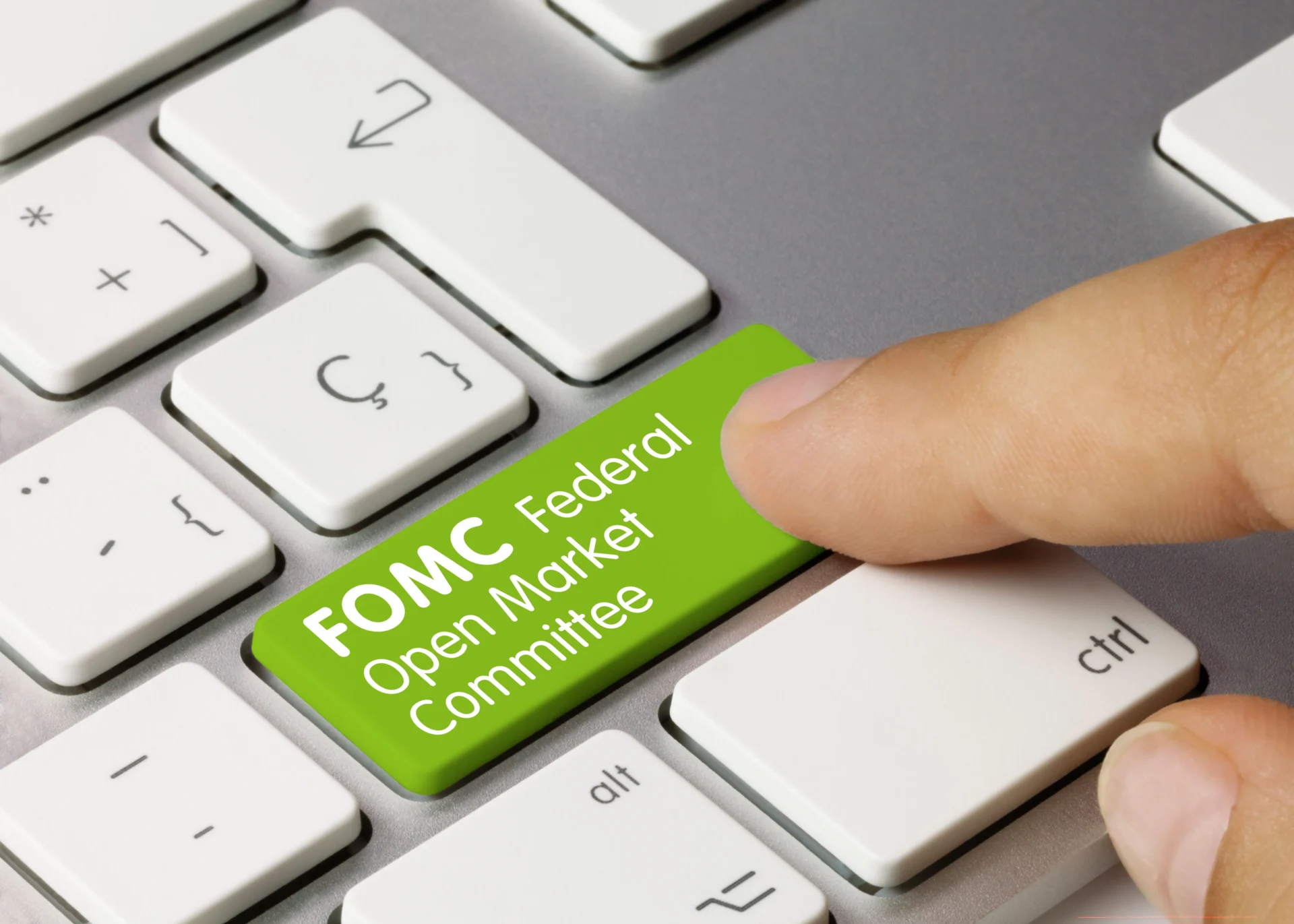What Is the Federal Open Market Committee (FOMC)?
The term Federal Open Market Committee (FOMC) refers to the branch of the Federal Reserve System (FRS) that determines the direction of monetary policy in the United States by directing open market operations (OMOs). The committee comprises 12 members, including seven members of the Board of Governors, the president of the Federal Reserve Bank of New York, and four of the remaining 11 Reserve Bank presidents, who serve on a rotating basis.

KEY TAKEAWAYS
- The Federal Open Market Committee is a branch of the Federal Reserve System.
- The FOMC determines the direction of monetary policy by directing open market operations.
- The committee is composed of the seven members of the Board of Governors and five Federal Reserve Bank presidents.
- It has eight regularly scheduled meetings each year that are the subject of speculation on Wall Street.
Understanding the Federal Open Market Committee (FOMC)
The 12 members of the FOMC meet eight times a year to discuss whether there should be any changes to near-term monetary policy. A vote to change policy would result in either buying or selling U.S. government securities on the open market to promote the growth of the national economy. Committee members are typically categorized as hawks favoring tighter monetary policies, doves favoring stimulus, or centrists/moderates somewhere in between.
The FOMC chair is also the chair of the Board of Governors. The current makeup of the board is as follows:
- The chair is Jerome Powell, who was sworn in for a second four-year term on May 23, 2022. He began his first term in this role in February 2018. Powell is considered a moderate.
- The vice-chair of the FOMC is Lael Brainard. She was sworn into the position on May 23, 2022, for a full four-year term. She joined the board in June 2014.
- Other Federal Reserve Board members include Michelle Bowman, Michael Barr, Lisa Cook, Philip Jefferson, and Christopher Waller.
There are 12 Federal Reserve districts, each with its own Federal Reserve Bank. These regional banks operate as extensions of the central bank. The president of the Federal Reserve Bank of New York serves continuously. In contrast, the presidents of the others serve one-year terms on a three-year rotating schedule (except for Cleveland and Chicago, which rotate on a two-year basis).
The one-year rotating seats of the FOMC are always comprised of one Reserve Bank president from each of the following groups:
- Boston, Philadelphia, and Richmond
- Cleveland and Chicago
- St. Louis, Dallas, and Atlanta
- Kansas City, Minneapolis, and San Francisco
The geographic-group system helps ensure that all regions of the United States receive fair representation. Here are the current FOMC members:
| Current FOMC Members | |
|---|---|
| Name | Position |
| Jerome Powell | Chair of the Federal Reserve Board |
| Lael Brainard | Vice-Chair of Federal Reserve Board |
| Michelle Bowman | Member of Federal Reserve Board |
| Lisa Cook | Member of Federal Reserve Board |
| Philip Jefferson | Member of Federal Reserve Board |
| Christopher Waller | Member of Federal Reserve Board |
| Michael Barr | Member of Federal Reserve Board |
| John Williams | President of the Federal Reserve Bank of New York |
| James Bullard | President of the Federal Reserve Bank of St. Louis |
| Susan Collins | President of the Federal Reserve Bank of Boston |
| Esther George | President of the Federal Reserve Bank of Kansas City |
| Loretta Mester | President of the Federal Reserve Bank of Cleveland |
FOMC Meetings
The FOMC has eight regularly scheduled meetings each year, but they can meet more often if the need should arise. The meetings are not held in public. They are, therefore, the subject of much speculation on Wall Street as analysts attempt to predict whether the Fed will tighten or loosen the money supply with a resulting increase or decrease in interest rates.
In recent years, FOMC meeting minutes have been made public following the meetings. When it is reported in the news that the Fed changed interest rates, it is the result of the FOMC’s regular meetings.
During the meeting, members discuss developments in the local and global financial markets and economic and financial forecasts. All participants—the Board of Governors and all Reserve Bank presidents—share their views on the country’s economic stance and converse on the monetary policy that would be most beneficial for the country—after much deliberation by all participants, only designated FOMC members to get to vote on a policy they consider appropriate for the period.






